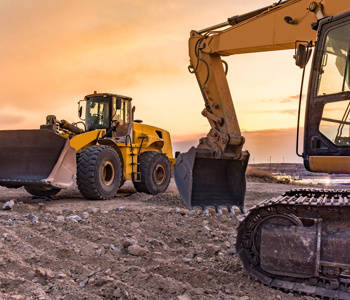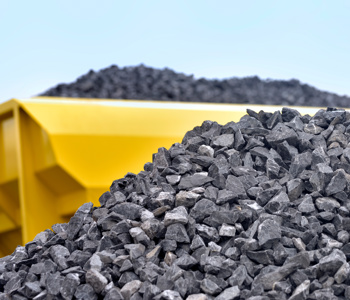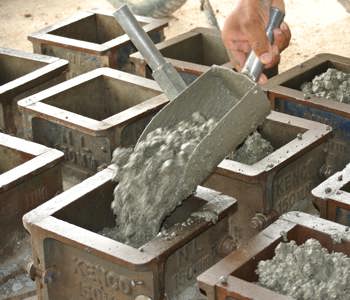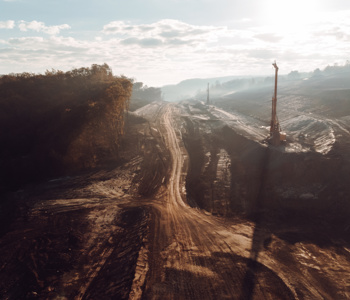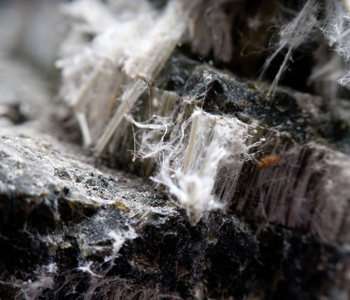Why Contaminated Land Soil Testing?
Disposing of contaminated materials in landfills can cost thousands of pounds. By having your “Red” contaminated soils and aggregates characterised by CTS, you can gain the information needed to make informed decisions about reuse, helping you save costs and promote sustainable construction practices.
The construction industry is continually seeking innovative methods to divert waste from landfills, aiming to reduce costs while meeting sustainability targets and compliance with UK regulations. According to Defra, 57% of landfill waste consists of soil, predominantly originating from building and civil engineering projects.
Key considerations involve soil waste from sites classified as “Yellow” or “Red” per British Drilling Association (BDA) guidelines, or when soils are found to be contaminated with asbestos and other hazardous substances. The Environmental Agency estimates that the number of contaminated sites could span from 5,000 to 20,000 solely across England and Wales.
Assessing and characterising contaminated materials is crucial for informing their proper disposal or reuse. More notably, it enables organisations to identify materials safe for reuse in specific applications. Landfills and other methods for disposing of contaminated materials can be expensive, so finding reuse opportunities is not only sustainable but incredibly cost-effective.

Contaminated Material Testing from Our Red Laboratory
At CTS, our expert team of engineers and technicians is fully equipped to deliver a comprehensive analysis of known contaminated soils and aggregates. Operating from our UKAS-accredited* “Red” Laboratory, we offer an extensive scope of test types, ensuring all your contaminated material testing and grading needs are met in one place.
Our state-of-the-art facility includes specialist HEPA-filtered air extraction systems, advanced PPE and RPE, and a custom-built decontamination clean room. All our technicians are trained to the highest standards in contaminated material management, ensuring precision and safety across all our investigations.
Our advanced capabilities enable us to accept a wide range of “Red” list contaminated soils and aggregates, including samples containing asbestos and heavy metals. We are dedicated to processing large volumes of samples to tight reporting deadlines, providing quick and accurate insights into your materials’ physical properties and classification.

Red Laboratory Test Services
- Sampling (from stockpiles)
- Particle size distribution (sieving method)
- Particle density
- Flakiness index
- Shape index
- Percentage of crushed & broken surfaces in coarse aggregate particles
- Classification test for the constituents of coarse recycled aggregate
- Micro-Deval coefficient
- Resistance to fragmentation (LA method)
- Resistance to fragmentation of aggregates for railway ballast (LA method)
- Loose bulk density & voids
- Water content
- Particle density & water absorption
- Uniformity coefficient
- Sampling site excavated material (from heaps)
- Sampling imported granular material (from stockpiles or heaps)
- Moisture content (oven drying method)
- Dynamic cone penetrometer
- Liquid limit via cone penetrometer (one point or definitive method)
- Plastic limit
- Plasticity index
- Particle size distribution (wet or dry sieving)
- Particle size distribution of fine-grained soils (hydrometer method)
- Particle density (gas jar)
- Bulk density (by linear measurement)
- Dry density / moisture content relationship
- Moisture Condition Value (MCV) relationship
- MCV (natural moisture content)
- Undrained shear strength (triaxial compression)
- California Bearing Ratio (CBR)
- Calculation of equivalent CBR value (using plate bearing test)
- Swelling of soaked CBR specimen
- Vertical deformation & strength characteristics (incremental plate loading test)
- In-situ density via large pouring cylinder (sand replacement method)
- In-situ density (core cutter method)
- In-situ bulk or moisture density (nuclear method)
- In-situ California Bearing Ratio (CBR)
Reuse of Contaminated Materials for Construction Projects
Following a test that finds any materials suitable for reuse, organisations must generate a Materials Management Plan. This is required by the Definition of Waste: Development Industry Code of Practice (DoWCoP), which provides guidance for the reuse of materials on the site of origin or another site. The plan must then be reviewed and declared to CL:AIRE by a Qualified Person (QP).
As part of the Phenna Infrastructure Division, CTS is partnered with a range of geo-environmental consulting teams who can support your project by recommending safe, innovative uses of site-won materials. Our colleagues are certified QPs and have a wealth of experience producing and reviewing Materials Management Plans.

Ensure Proper Contaminated Material Disposal & Reuse with CTS
At CTS, we pride ourselves on consistently delivering high-quality on-site and laboratory-based construction materials testing, enabling our clients to meet compliance obligations and progress projects safely and without delay.
To find out more about our hazardous aggregate and contaminated land soil testing services, please contact a member of the CTS team today. We’ll be more than happy to answer any questions you have regarding our services and how we can help you.
Request a Quote
Frequently Asked Questions about Red Lab
What is Red Laboratory contaminated material testing?
Following a chemical investigation to identify the presence of hazardous substances in your materials, you will receive a report classifying them as “Green”, “Yellow”, or “Red” list materials. Typically, yellow and red waste stream items require specialist disposal, which can be costly.
Red Laboratory contaminated material testing involves known to be contaminated to understand whether they should be recycled, or reused.
How should contaminated waste materials be disposed of?
Contaminated materials are typically disposed of at licensed landfill sites, which specify their soil acceptance criteria. In construction, transporting large amounts of hazardous soils and aggregates from sites can cost thousands of pounds.
The alternative is identifying appropriate recycling or reuse opportunities. For example, some contaminated soils or aggregates can be reused if placed deep below the ground. This is much more cost-effective than disposing of contaminated materials in landfills.
What types of materials or substances are not accepted at the CTS Red Lab?
Our Red Laboratory will not test materials containing:
- Radioactive compounds
- Live munitions or explosives
- Animal, pathological & microbiological wastes
- Blood products
- Human bodily fluids
In most cases, we will accept asbestos or other fibre-containing soil samples, heavy-metal or hydrocarbon contaminated soil, and biologically inactive but odorous organic soil or soil-sludge mixtures.
What types of contaminated materials can you accept at the CTS Red Lab?
The CTS Red Laboratory may accept materials containing:
- Asbestos or other fibre-containing soil samples
- Hydrocarbon or heavy-metal-contaminated soil
- Biologically inactive but odorous organic soil or soil–sludge mixtures.
Do you have an asbestos testing lab?
At the CTS asbestos analysis labs, we can test for the presence of asbestos in a wide range of material samples. At our Red Laboratory, we can assess soil samples known to be contaminated with asbestos and other fibres to inform proper disposal or recycling and reuse opportunities.

